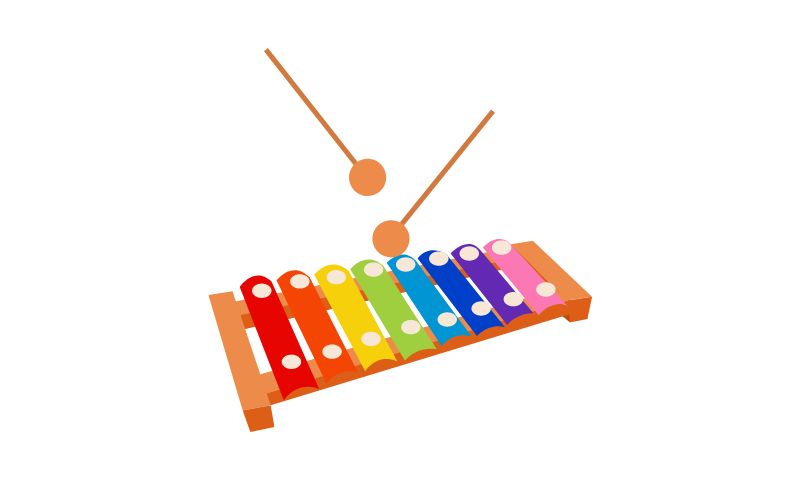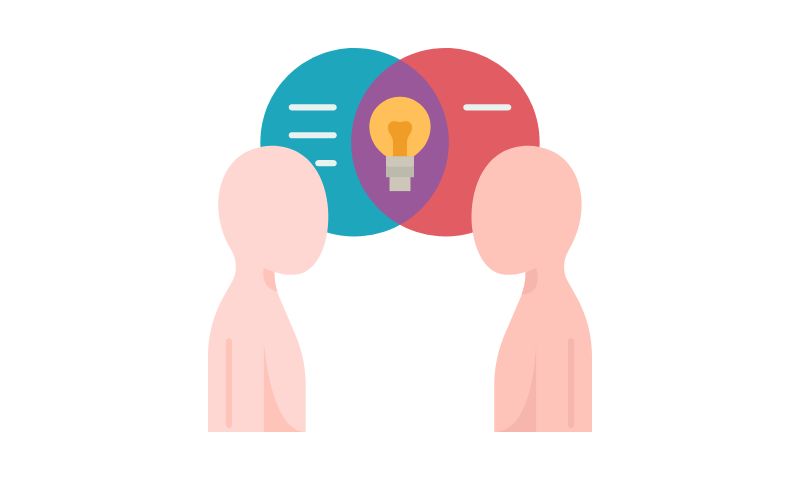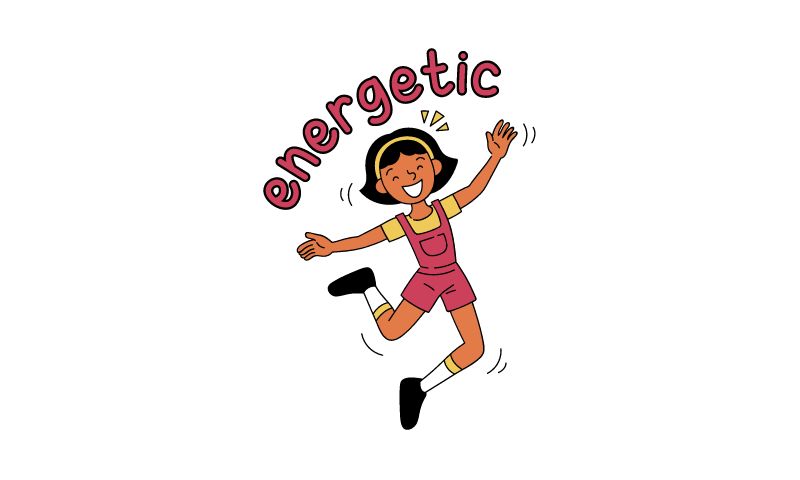In the vast realm of writing, the power of words goes beyond their literal meanings. The tone with which those words are delivered can profoundly impact how the message is perceived and received.
Understanding the different types of tones in writing is essential for any writer aiming to effectively engage their readers and evoke specific emotions.
Imagine reading a heartfelt story that fails to stir any empathy or a persuasive argument that lacks conviction. The missing ingredient is often the tone – the writer’s attitude, style, and emotional expression woven into the words.
By mastering the art of tone, writers can create pieces that captivate, inspire, or even challenge their audience. In this article, we will explore a range of tones commonly used in writing.
From formal to informal, objective to subjective, and everything in between, we will delve into the nuances of each tone, providing examples and insights along the way.
Whether you are an aspiring writer seeking to refine your craft or a reader curious about the impact of tone, this guide will unravel the secrets behind compelling and impactful writing.
Types of tones in writing
Table of Contents
Have a close look at the types of tones in writing.
Formal Tone

The formal tone is characterized by a serious and professional approach. It is often used in academic, business, and official contexts where a sense of professionalism is required. The language is precise, objective, and avoids colloquial expressions or slang. Moreover, it is one of the major types of tones in writing.
For example, in a formal tone, an essay discussing the effects of climate change on the global economy would use sophisticated language, present statistical data, and provide citations from authoritative sources. The tone would be authoritative, demonstrating the writer’s expertise on the subject.
Informal Tone

Conversely, the informal tone is more relaxed, casual, and conversational. It is commonly found in personal narratives, blogs, and friendly communications. The language is less rigid, allowing for colloquialisms and a friendly, approachable style. Moreover, it is one of the major types of tones in writing.
An example of an informal tone would be a blog post about traveling to a specific destination. The writer may use personal pronouns, share anecdotes, and employ a conversational style to connect with the readers and make them feel like they’re having a casual conversation.
Objective Tone

An objective tone aims to present information in an unbiased and neutral manner. It avoids personal opinions or emotions, focusing on facts, evidence, and logical arguments. This tone is often used in news articles, scientific papers, and reports. Moreover, it is one of the major types of tones in writing.
For instance, an objective tone would be employed in a news article reporting on a recent scientific discovery. The writer would present the facts, provide quotes from experts, and refrain from inserting personal opinions or biases.
Subjective Tone

In contrast, the subjective tone reflects the writer’s personal opinions, emotions, and experiences. It is often used in creative writing, personal essays, and editorials. The language is more expressive and allows for the inclusion of personal anecdotes and reflections. Moreover, it is one of the major types of tones in writing.
In a subjective tone, a personal essay about overcoming challenges may incorporate the writer’s emotions, thoughts, and reflections on their journey. The language used would be more introspective and open, inviting the reader to connect with the writer on a personal level.
Academic Tone

The academic tone is characterized by a formal and authoritative approach. It is commonly found in scholarly articles, research papers, and academic essays. The language is precise, rigorous, and supported by credible sources. Moreover, it is one of the major types of tones in writing.
An academic tone would be used in a research paper analyzing a literary work. The writer would employ critical analysis, utilize academic language, and cite relevant sources to support their arguments and interpretations.
Persuasive Tone

When writers aim to persuade or convince their readers, they adopt a persuasive tone. It combines logical arguments, emotional appeals, and rhetorical devices to sway the audience’s opinion. Persuasive tones are frequently employed in advertising, speeches, and opinion pieces.
In a persuasive tone, an advertisement for a new skincare product would use enticing language, emphasize the product’s benefits, and appeal to the reader’s desire for flawless skin. The tone would be engaging and compelling, urging the reader to take action and purchase the product.
Narrative Tone

The narrative tone is employed in storytelling and fiction writing. It creates a sense of storytelling, engaging the reader through vivid descriptions, character development, and plot progression.
The language is often imaginative, capturing the reader’s attention and drawing them into the narrative. Moreover, it is one of the major types of tones in writing.
In a narrative tone, a short story would utilize descriptive language, dialogue, and vivid imagery to bring the characters and settings to life. The tone would be captivating and immersive, allowing the reader to experience the story alongside the characters.
Descriptive Tone

Similar to the narrative tone, the descriptive tone focuses on creating vivid imagery and sensory details. It appeals to the reader’s senses, painting a picture with words.
Descriptive tones are often found in poetry, travel writing, and descriptive essays. Moreover, it is one of the major types of tones in writing.
In a descriptive tone, a travel article about a tropical paradise would use lush descriptions of the landscape, vibrant colors, and the sounds of nature. The tone would transport the reader to the destination, allowing them to visualize and experience it through the writer’s words.
Satirical Tone

Satirical writing adopts a mocking or humorous tone to criticize and ridicule individuals, institutions, or societal norms. It employs irony, sarcasm, and wit to convey its message. Satirical tones are frequently used in satire pieces, cartoons, and social commentaries.
A satirical tone would be employed in a political cartoon mocking a public figure. The tone would use exaggerated visuals and sarcastic captions to satirize their actions or policies, highlighting the writer’s critical perspective.
Energetic Tone

An energetic tone is characterized by enthusiasm, passion, and excitement. It aims to captivate the reader and convey a sense of dynamism.
Energetic tones are often utilized in motivational writing, self-help books, and advertising copy. Moreover, it is one of the major types of tones in writing.
In an energetic tone, a motivational article would use uplifting language, inspirational stories, and exclamation marks to ignite the reader’s enthusiasm and motivate them to pursue their goals.
Authoritative Tone

The authoritative tone exudes confidence, knowledge, and expertise. It establishes the writer as an expert in their field, providing authoritative information and advice.
This tone is commonly found in instructional manuals, technical writing, and expert opinions. Moreover, it is one of the major types of tones in writing.
An authoritative tone would be employed in a technical manual explaining how to operate a complex machinery. The writer would use clear and concise language, provide step-by-step instructions, and demonstrate their expertise on the subject.
Compassionate Tone

A compassionate tone conveys empathy, understanding, and warmth. It aims to create an emotional connection with the reader and evoke feelings of compassion or sympathy.
Compassionate tones are frequently used in charitable appeals, personal stories, and social campaigns. Moreover, it is one of the major types of tones in writing.
In a compassionate tone, a nonprofit organization’s appeal for donations would use heartfelt language, share stories of individuals in need, and emphasize the impact of the reader’s contribution. The tone would be empathetic, encouraging the reader to make a difference.
Melancholic Tone

The melancholic tone expresses sadness, nostalgia, or introspection. It evokes a sense of wistfulness and longing in the reader. Melancholic tones are often employed in poetry, literary fiction, and reflective essays. Moreover, it is one of the major types of tones in writing.
A melancholic tone would be used in a reflective essay about lost love, utilizing introspective language, poetic imagery, and a contemplative mood to convey the writer’s emotions and reflections.
What are the 3 parts of tone?
The three parts of tone in writing can be described as follows:
Language Choice
Language choice refers to the specific words and vocabulary a writer selects to convey their message. Different words have different connotations and evoke various emotions in readers.
By choosing words carefully, writers can create a tone that aligns with their intended effect, whether it’s formal, informal, technical, poetic, or any other desired tone.
Syntax and Sentence Structure
Syntax and sentence structure involve the arrangement of words, phrases, and clauses in a sentence or paragraph. The length and complexity of sentences, as well as the use of punctuation and grammatical structures, can contribute to the tone of writing.
For instance, short, concise sentences may convey a sense of urgency or directness, while long, flowing sentences can create a more contemplative or lyrical tone.
Attitude or Voice
Attitude or voice represents the writer’s attitude, perspective, or stance toward the subject matter. It encompasses the emotional and intellectual position from which the writing is crafted.
The attitude may be conveyed through the writer’s choice of words, the way they present arguments or ideas, and the overall tone they establish. Attitude can range from objective and detached to subjective and passionate, influencing how readers perceive the writer’s intentions and message.
By considering these three elements—language choice, syntax and sentence structure, and attitude or voice—writers can effectively shape the tone of their writing, engaging readers and effectively conveying their intended meaning.
What are the two tones of writing?
There are numerous tones that writers can employ in their writing, but two commonly recognized tones are:
Formal Tone
A formal tone is characterized by a professional, serious, and respectful style of writing. It is commonly used in academic, scholarly, or business contexts where a level of professionalism and authority is expected.
Writers using a formal tone typically employ standard grammar and vocabulary, avoid contractions and slang, and present information in a structured and objective manner.
The goal of a formal tone is to convey expertise and credibility, establishing a sense of professionalism and maintaining a respectful distance from the reader.
Informal Tone
An informal tone, on the other hand, adopts a more relaxed, conversational, and casual style of writing. It is often employed in personal or friendly contexts, such as personal emails, blog posts, or informal letters.
Writers using an informal tone may incorporate contractions, colloquial language, and a more relaxed sentence structure.
The purpose of an informal tone is to create a sense of familiarity, connect with the reader on a personal level, and establish a friendly and approachable atmosphere.
While these two tones represent opposite ends of the spectrum, writers often utilize a combination of both depending on the context, purpose, and intended audience of their writing. The choice of tone is crucial in effectively communicating ideas and engaging readers, and writers should carefully consider the tone that best suits their message and desired impact.
Are there different types of tone?
Yes, there are different types of tones that writers can employ to convey various emotions, attitudes, or moods in their writing. Some commonly recognized types of tone include:
Authoritative Tone
An authoritative tone is characterized by confidence, expertise, and a commanding presence. It is often used in persuasive or argumentative writing, where the writer seeks to establish credibility and influence the reader.
An authoritative tone conveys a sense of knowledge and expertise on the subject matter, aiming to convince and persuade the reader through a confident and commanding voice.
Empathetic Tone
An empathetic tone aims to evoke understanding, compassion, and sensitivity in the reader. It is often used in narratives, personal essays, or when addressing emotionally charged topics.
Writers employing an empathetic tone demonstrate an understanding of the reader’s feelings or experiences, fostering a sense of connection and empathy through their words.
Humorous Tone
A humorous tone seeks to entertain and amuse the reader through the use of wit, wordplay, or clever observations. It can be found in comedic writing, satirical pieces, or even in lighter moments of more serious texts.
A humorous tone creates a lighthearted and enjoyable reading experience, often employing irony, sarcasm, or clever word choices to elicit laughter or amusement.
Formal Tone
As mentioned earlier, a formal tone is characterized by professionalism, seriousness, and adherence to traditional language conventions.
It is commonly used in academic or business writing, where a level of professionalism and respect is expected. A formal tone aims to establish authority, convey expertise, and maintain a level of decorum and seriousness.
Playful Tone
A playful tone is characterized by a sense of joy, spontaneity, and lightness. It is often used in creative writing, children’s literature, or when the writer wants to create an engaging and energetic atmosphere.
A playful tone may involve the use of creative metaphors, vivid imagery, or imaginative language to capture the reader’s attention and create a sense of delight.
These are just a few examples of the different types of tones that writers can utilize in their writing. Each type of tone serves a specific purpose and evokes a particular response from the reader, allowing writers to effectively communicate their intended message and connect with their audience on an emotional level.
What is an example of a tone in writing?
Example: The teacher’s voice dripped with sarcasm as she asked, “Oh, did you forget to do your homework again?”
In this example, the tone of the writing is sarcastic. The use of sarcasm is evident in the teacher’s statement, indicated by the choice of words and the mocking tone. The writer intends to convey a sense of irony and humor, creating a tone that is meant to be witty and slightly mocking.
The sarcastic tone adds a layer of attitude and implies that the teacher is not genuinely surprised but rather expressing frustration or disbelief. This example demonstrates how the tone in writing can significantly impact the overall message and reader’s perception.
Importance of understanding and using different tones
Understanding and using different tones in writing is important for the following reasons:
Effective Communication
Different tones evoke different emotions and create specific atmospheres, allowing writers to communicate their intended message more effectively.
Audience Engagement
Tailoring the tone to suit the target audience enhances reader engagement and receptiveness to the content.
Conveying Author’s Intent
The choice of tone helps writers align their words with their intentions, whether it’s persuading, informing, entertaining, or inspiring the readers.
Establishing Credibility
The appropriate tone can enhance the writer’s credibility and authority on a subject, building trust with the audience.
Creating Connection
By using the right tone, writers can establish a connection with the readers, making them feel understood, valued, and engaged.
Enhancing Memorability
Different tones leave a lasting impression on readers, making the writing more memorable and impactful.
Adapting to Context
Understanding and using different tones allows writers to adapt their writing style to various contexts, such as formal documents, personal narratives, or persuasive arguments.
Reflecting Diversity
Different tones accommodate the diverse needs, preferences, and cultural backgrounds of readers, enabling writers to reach a wider audience.
Eliciting Emotional Responses
Tones can evoke specific emotions in readers, such as empathy, excitement, or amusement, creating a more immersive and engaging reading experience.
Crafting an Authentic Voice
By utilizing various tones, writers can develop their unique voice and style, which distinguishes them and adds depth to their writing.
Conclusion
In conclusion, understanding the various types of tones in writing is essential for effective communication and conveying the intended message to readers.
By employing the appropriate tone, writers can evoke specific emotions, establish the desired atmosphere, and connect with their audience on a deeper level.
Whether it’s the authoritative tone that conveys expertise, the empathetic tone that fosters understanding, or the persuasive tone that seeks to influence, each tone has its own unique power and purpose.
The mastery of tone allows writers to wield language as a potent tool, leaving a lasting impact and ensuring their words resonate with readers long after they’ve been read.
So, whether you’re crafting an academic essay, a captivating story, or a persuasive argument, remember that the choice of tone can make all the difference in creating a memorable and compelling piece of writing.
Frequently Asked Questions
Can a piece of writing have multiple tones?
Yes, it is possible for a piece of writing to exhibit multiple tones. In fact, blending different tones can add depth and complexity to the overall message.
How can I determine the appropriate tone for my writing?
The choice of tone depends on various factors such as the purpose of the writing, the target audience, and the desired emotional impact. Consider these factors and select a tone that aligns with your objectives.
Are there any rules for using different tones in writing?
There are no strict rules, but it is important to be consistent within a piece of writing. Switching tones abruptly can confuse the reader and disrupt the flow of the content.
Can the tone of a piece of writing change over time?
Yes, the tone can change as the writer’s perspective or the subject matter evolves. It is natural for the tone to shift subtly or dramatically throughout a longer piece of writing.
ow can I develop my ability to write with different tones?
Reading diverse literature, practicing different writing styles, and experimenting with various tones will help you develop your ability to write with different tones. Pay attention to how successful authors effectively convey their intended tone.



